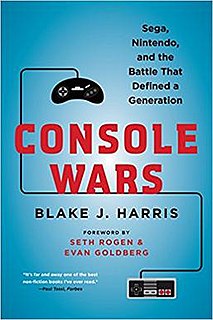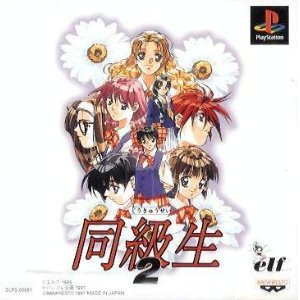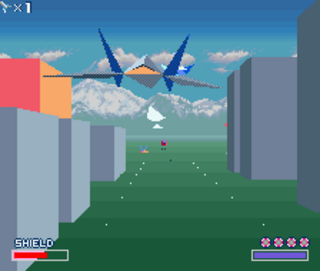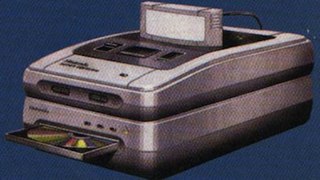 W
WThe Super Nintendo Entertainment System (SNES), also known as the Super NES or Super Nintendo, is a 16-bit home video game console developed by Nintendo that was released in 1990 in Japan and South Korea, 1991 in North America, 1992 in Europe and Australasia (Oceania), and 1993 in South America. In Japan, the system is called the Super Famicom (SFC). In South Korea, it is known as the Super Comboy and was distributed by Hyundai Electronics. The system was released in Brazil on August 30, 1993, by Playtronic. Although each version is essentially the same, several forms of regional lockout prevent the different cartridges from being compatible with one another.
 W
WConsole Wars: Sega, Nintendo, and the Battle That Defined a Generation is a 2014 non-fiction novel written by Blake J. Harris. It follows businessman Tom Kalinske in his venture as CEO of video game company Sega of America, and details the history of the fierce business competition between Sega and Nintendo throughout the 1990s as well as the internal conflicts that took place between Sega of America and Sega of Japan. Harris wrote the book in the style of a novel by compiling several interviews with people who were involved with the events, using the information gathered to create a dramatic interpretation of the events. A film adaptation of the book directed by Seth Rogen and Evan Goldberg was announced in February 2014 and released in September 23, 2020.
 W
WDokyusei 2 is a video game published by ELF Corporation and the sequel to Dōkyūsei. Dōkyūsei 2 was released in 1995 for MS-DOS version and in 1997 for Microsoft Windows. A PlayStation version was released on August 7, 1997.
 W
WThe Super Nintendo Entertainment System (SNES) video game console has a library of games, which were released in plastic ROM cartridges. The cartridges are shaped differently for different regions; North American cartridges have a rectangular bottom with inset grooves matching protruding tabs in the console, while other regions' cartridges are narrower with a smooth curve on the front and no grooves. The physical incompatibility can be overcome with use of various adapters, or through modification of the console. Internally, a regional lockout chip within the console and in each cartridge prevents PAL region games from being played on Japanese or North American consoles and vice versa. This can be overcome through the use of adapters, typically by inserting the imported cartridge in one slot and a cartridge with the correct region chip in a second slot. Alternatively, disconnecting one pin of the console's lockout chip will prevent it from locking the console, although hardware in later games can detect this situation.
 W
WMode 7 is a graphics mode on the Super NES video game console that allows a background layer to be rotated and scaled on a scanline-by-scanline basis to create many different effects. The most famous of these effects is the application of a perspective effect on a background layer by scaling and rotating the background layer in this manner. This transforms the background layer into a two-dimensional horizontal texture-mapped plane that trades height for depth. Thus, an impression of three-dimensional graphics is achieved.
 W
WThe New-Style Super NES is a compact redesign of the original Super Nintendo Entertainment System video game console released by Nintendo in 1997. In Japan, the system is called the Super Famicom Jr. . Like the redesigned version of the original Nintendo Entertainment System before it, the new-style Super NES was released late during the platform's lifespan.
 W
WSatellite Digital Audio Broadcast Co., Ltd. , trading as St.GIGA , was a Japanese satellite radio company headquartered in Akasaka, Tokyo. The company was established on April 2, 1990 as a subsidiary of the television station provider Wowow, achieving a cult following through its "Tide of Sound" nature sounds recording broadcasts and its nonstandard methodology. By 1994, St.GIGA was struggling financially due to the Japanese Recession affecting the demand for its ambient music, as consumers became reluctant to invest in satellite tuners.
 W
WThe Super Famicom Naizou TV SF1 is a television set produced by Sharp Corporation with a built-in licensed Super Famicom. Released only to Japanese markets, the unit retailed in 1990 as a next generation successor to the 1983 C1 television also produced by Sharp and licensed by Nintendo. Like the C1, the SF1 was noted as having superior picture quality to a SFC plugged into a standard television.
 W
WThe Super FX is a coprocessor on the Graphics Support Unit (GSU) added to select Super Nintendo Entertainment System (SNES) video game cartridges, primarily to facilitate advanced 2D and 3D graphics. The Super FX chip was designed by Argonaut Games, who also co-developed the 3D space rail shooter video game Star Fox with Nintendo to demonstrate the additional polygon rendering capabilities that the chip had introduced to the SNES.
 W
WThe Super NES CD-ROM System, known as Super Famicom CD-ROM Adapter in Japan, is an unreleased video game peripheral for the Super Nintendo Entertainment System (SNES). The add-on built upon the functionality of the cartridge-based SNES by adding support for a CD-ROM-based format known as Super Disc.
 W
WThe Super Nintendo Entertainment System Game Pak is the system's default ROM cartridge medium. It is called Game Pak in most Western regions, and Cassette in Japan and parts of Latin America. While the Super NES can address 128 Megabits, only 117.75 Megabits are actually available for cartridge use. A fairly normal mapping can easily address up to 95 Megabit of ROM data with 8 Megabits of battery-backed RAM. However, most available memory access controllers only support mappings of up to 32 Megabits. The largest games released contain 48 Megabits of ROM data, while the smallest games contain 2 Megabits.